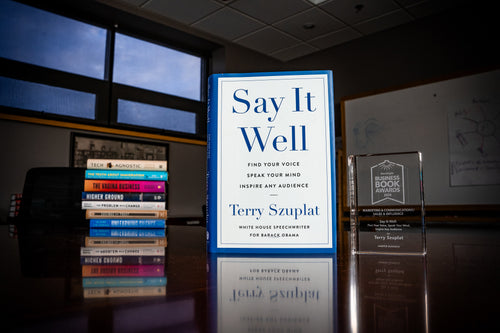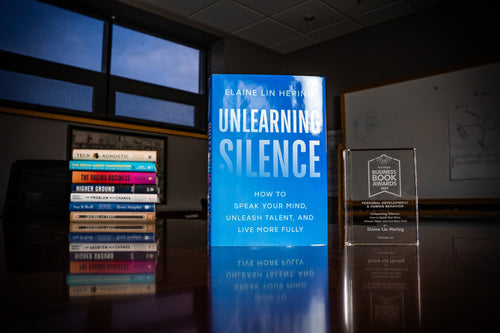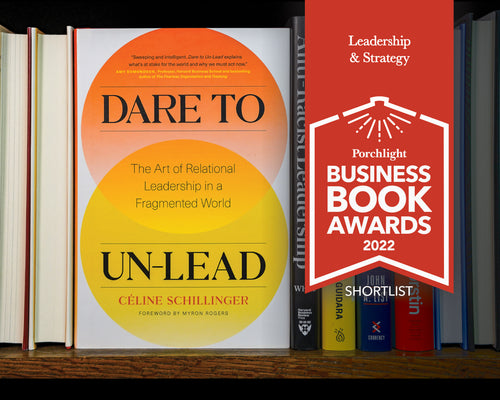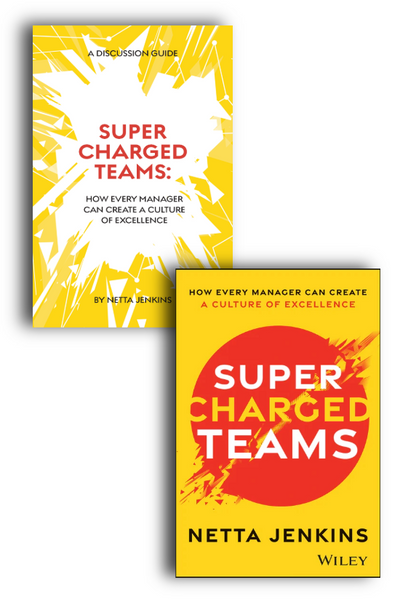Fusion: How Integrating Brand and Culture Powers the World's Greatest Companies

I think we can all agree these days we are living in a heightened age of frustrating politics, on both sides of the aisle. Our representatives make statements railing against [fill in the social ill], at the same time they accept piles of cash from [fill in the opposite side's lobbying group]. The disconnect between public statements and private actions is enough to make constituents turn off their [fill in your favorite news outlet] for good. And that's not good for our country, or democracy in general.
In the corporate world, this kind of statement (i.e. brand) and action (i.e. workplace culture) misalignment can take you down the pathway to bankruptcy. The story we tell to the outside world via our social media, advertising, and product selection must echo the story we tell our employees internally if we wish to achieve the greatest heights of success. This excerpt from Denise Lee Yohn's new book, Fusion: How Integrating Brand and Culture Powers the World's Greatest Companies, tackles this situation for B2B companies, non-profits, and every organization in between.
If you are looking for more insights from Denise, she also contributed a manifesto this month to our sister site ChangeThis, titled "Forget Everything You Know About Culture."
Every Organization Needs Fusion
In nuclear physics, fusion is the reaction that happens when two atomic nuclei come together. Nuclear fusion releases large amounts of energy—it’s what powers the sun. When fused, the two nuclei create something entirely new.
In the same way, you can unleash great power when you fuse together your organization’s two nuclei: your culture—the way the people in your organization behave and the attitudes and beliefs that inform them (i.e., “the way we do things around here”)—and your brand or brand identity, how your organization is understood by customers and other stakeholders. Culture involves so much more than perks and parties, and brands are built by so much more than ads and public relations. But until recently, culture and brand were often seen as the “soft stuff” in business, often relegated to human resources and marketing efforts, respectively. Today, many leaders are starting to recognize what astute ones have known all along: culture and brand are the nuclei of their organizations, the biggest drivers of the hard results they must produce every day.
Independently, culture and brand are powerful, often unsung, business drivers. But when you fuse the two—when you create an interdependent and mutually reinforcing relationship between how your organization thinks and acts on the inside and how it is perceived and experienced on the outside—you create new growth that isn’t possible by simply cultivating one or the other alone.
Virtually every type of organization can benefit from fusion. Although larger, B2C (business-to-consumer) companies have been more likely to engage in brand- and culture-building in the past, the importance of brand and culture as vital components of any organization has been gaining wider ground. If you don’t think integrating brand and culture is important to your company, think again. Brand-culture fusion has the potential to improve the competitiveness and accelerate the growth of almost any organization, regardless of its size or type, including:
B2B (business-to-business) companies: The integration and alignment of brand and culture is critical in B2B organizations because employees are highly involved with customers during the sales process and throughout the product service and support cycle. In the case of consulting and other professional services firms, employees often are the product themselves. In fact, Laurie Young, author of Marketing the Professional Services Firm, has concluded that the day-to-day client-facing activities of employees are “probably the most influential aspects of building a professional services brand.” So in many B2B companies, culture is on display to customers much more clearly through people’s attitudes and behaviors. That’s why B2B organizations may need brand-culture fusion more than most. You’ll learn how B2B businesses including Salesforce, GE, and others have recognized their need to integrate their brand and culture and pursued it.
Start-ups: Culture-building isn’t something that only large, established companies need to attend to. David Cummings, cofounder of marketing automation company Pardot, believes “culture is insanely important for startups.” He should know: Pardot was on Inc. magazine’s fastest-growing-company list in 2012 and was acquired for just under $100 million only five years after its founding. “[Culture] is the cohesion that holds you together. For a lot of startups, culture is haphazard, and then all of a sudden they have 20 employees. The employees start grating on each other and they don’t work well together. To be sustainable, culture has to be intentional.” As I share the stories of companies such as Airbnb and Nike, you’ll see that their leaders made brand-culture fusion a priority from their earliest days.
Small businesses: If you own or a lead a small business, there are two primary reasons why brand-culture fusion can benefit your organization. First, the limited resources that constrain most small businesses require that everything you do be more productive. When your organization’s culture and brand are aligned and integrated, a single effort—a piece of communication such as a newsletter or a special event like a community-service activity—can produce results inside and out. And second, brand-culture fusion can help you get greater clarity on your priorities and navigate the countless new ideas and ventures that present themselves to small-businesspeople. By using your brand and culture as decision-making filters, instead of simply reacting to challenges or opportunities that rise unexpectedly, you can drive more sustainable growth. You’ll learn from small businesses such as BELAY, a virtual staffing firm based in Atlanta; Traction, an interactive agency in San Francisco; and Tower, a beach lifestyle company in San Diego.
Nonprofit organizations: Brand-culture fusion is particularly important for nonprofit organizations that must align the needs of beneficiaries, donors, volunteers, and sometimes governments or regulatory groups in addition to employees. Brand-culture fusion transcends and unites all of these groups and can be further leveraged if you design and manage explicit experiences for each of them. By introducing you to City Year, an organization that helps students stay in school and on track to graduate, and Plant With Purpose, which helps reverse deforestation and poverty around the world, I will demonstrate the power of integrating brand and culture in the nonprofit sector.
Brand-culture fusion even accelerates the success of organizations in which the traditional notion of “brand” doesn’t seem to apply. Brands are not the sole purview of commercial enterprises—they can be used by all sorts of organizations to engage the people involved with them inside and out. Whether yours is a highly technical company or a scientific institution, a public-sector agency, or even an academic or faith-based organization, your culture should still be integrated with your external identity—your brand—to help you achieve your goals.
Extracted from Fusion: How Integrating Brand and Culture Powers the World's Greatest Companies by Denise Lee Yohn, published by Nicholas Brealey Publishers, 2018. All rights reserved.
ABOUT THE AUTHOR
Denise Lee Yohn is an in-demand speaker and consultant, and a regular contributor to Harvard Business Review, Forbes and Fast Company. Her global clients include Oakley, Lexus, New Balance, Target, Sony and Facebook (to name a few). She is frequently called upon by the business media, including: FOX Business TV, CNBC, the Wall Street Journal and National Public Radio, to discuss on hot business issues.
































































